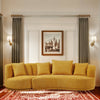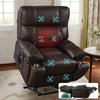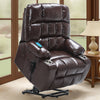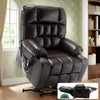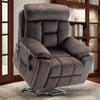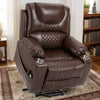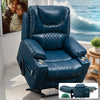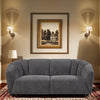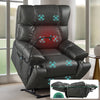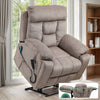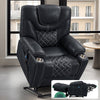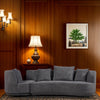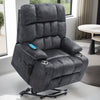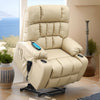Understanding the Functionality and Ergonomics of Different Sectional Designs
The Benefits of Square Sectionals for Small Spaces
Square sectionals are a great choice for smaller rooms. They fit snugly into corners, making the most of limited space. These compact designs offer ample seating without overwhelming the room. Square sectionals often come with modular pieces. This allows for easy rearrangement to suit different needs. They also tend to have a more formal look, perfect for contemporary homes. Many square sectionals include storage options, adding functionality to small spaces. Their symmetrical shape creates a balanced, organized appearance in any room.

Exploring the Comfort and Versati lity of L-Shaped Sectionals
L-shaped sectionals offer more seating and lounging options. They are ideal for larger living rooms or open-plan spaces. These sectionals create a natural division between areas in a room. They provide a cozy nook for conversation or TV watching. L-shaped designs often include a chaise lounge for extra comfort. They can accommodate more people, making them great for families or entertaining. Many L-shaped sectionals come with adjustable pieces for customized comfort. Their versatile shape allows for various room layouts and furniture arrangements.
Assessing the Accessibility of Sectional Chairs for Elderly Users
When choosing sectionals for elderly users, accessibility is key. Look for designs with higher seat heights for easier sitting and standing. Firm cushions provide better support and make it easier to get up. Consider sectionals with built-in lift mechanisms for added assistance. Wide armrests offer support when sitting down or getting up. Avoid deep seats that may be difficult for seniors to rise from. Look for sectionals with smooth, rounded edges to prevent injuries. Some designs offer power recline features, ideal for those with limited mobility. Ensure there's enough space around the sectional for walkers or wheelchairs.
Material and Durability Considerations in Sectional Furniture
Selecting High-Quality Materials for Lift Recliner Chairs
When choosing materials for lift recliner chairs, durability is crucial. Look for frames made of hardwood or metal for long-lasting support. High-density foam cushions maintain their shape and comfort over time. Leather upholstery is easy to clean and becomes more supple with age. For a softer feel, consider high-performance fabrics that resist stains and wear. Check for reinforced stitching at stress points to ensure longevity. The lift mechanism should be made of sturdy steel for reliable operation. Choose materials that are easy to maintain and clean for elderly users. Consider moisture-resistant fabrics for added protection against spills.

Durability and Maintenance: What to Look for in Sectional Designs
Durable sectional designs start with a strong frame. Look for kiln-dried hardwood frames for maximum stability. Reinforced corners and joints prevent wobbling and ensure longevity. High-resiliency foam cushions retain their shape and comfort over time. For upholstery, consider performance fabrics that resist stains and fading. Leather is another durable option that ages well with proper care. Check for removable, washable covers for easy maintenance. Avoid light colors if you have pets or young children. Look for sectionals with warranty coverage for peace of mind. Regular cleaning and maintenance will extend the life of your sectional.
Cost and Installation Advantages of Lift Recliner Chairs
Analyzing the Price Point of Square and L-Shaped Sectionals
The cost of sectionals varies based on size, materials, and features. Square sectionals are often more affordable due to their compact size. L-shaped designs tend to be pricier because of their larger size and versatility. High-end materials like leather or designer fabrics increase the cost. Built-in features like recliners or storage also affect the price. Consider the long-term value when comparing costs. A well-made sectional can last for many years, justifying a higher initial cost. Look for sales or package deals to get the best value. Don't forget to factor in delivery and assembly costs when budgeting. Some retailers offer financing options to make larger purchases more manageable.

Installation Tips: Fitting Your Sectional into Various Spaces
Measure your space carefully before choosing a sectional. Allow for at least 30 inches of walking space around the furniture. Consider the placement of doors, windows, and other furniture. For tight spaces, look for sectionals with smaller pieces that can be arranged flexibly. L-shaped sectionals work well in open floor plans or large rooms. In smaller rooms, a square sectional can maximize seating without overwhelming the space. Use painter's tape to outline the sectional's footprint on the floor. This helps visualize how it will fit. Consider the direction of foot traffic when positioning your sectional. Leave enough space for reclining features or pull-out beds if applicable.
The Long-Term Value of Investing in Quality Sectional Chairs
Investing in quality sectional chairs offers long-term benefits. High-quality materials and construction ensure durability and longevity. This means fewer replacements and repairs over time, saving money. Quality sectionals maintain their comfort and appearance for years. They often come with better warranties, providing peace of mind. Lift recliner chairs offer added value for elderly users or those with mobility issues. These chairs can improve quality of life and independence. Well-made sectionals can adapt to changing needs and styles over time. They often have timeless designs that won't quickly go out of fashion. Quality pieces can even increase in value, becoming cherished family heirlooms. The comfort and functionality of a good sectional enhance daily living experiences.







